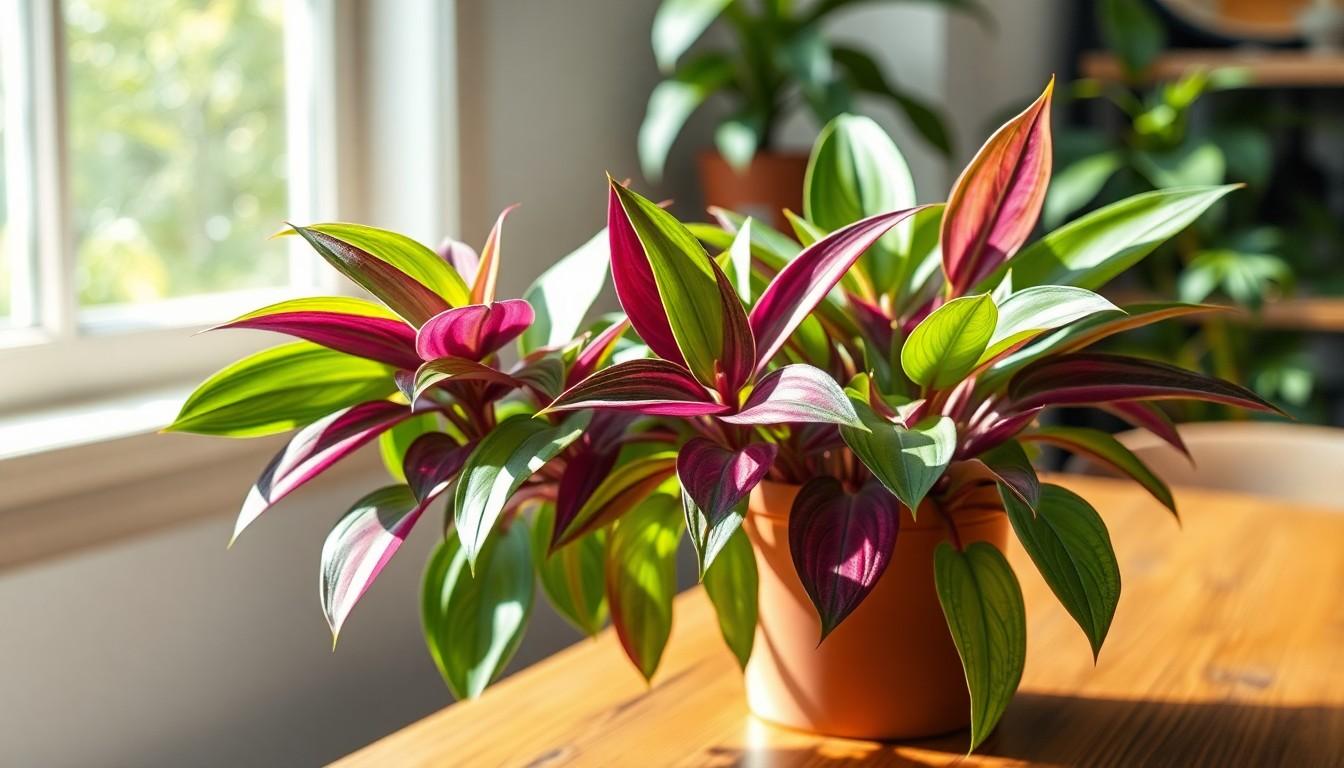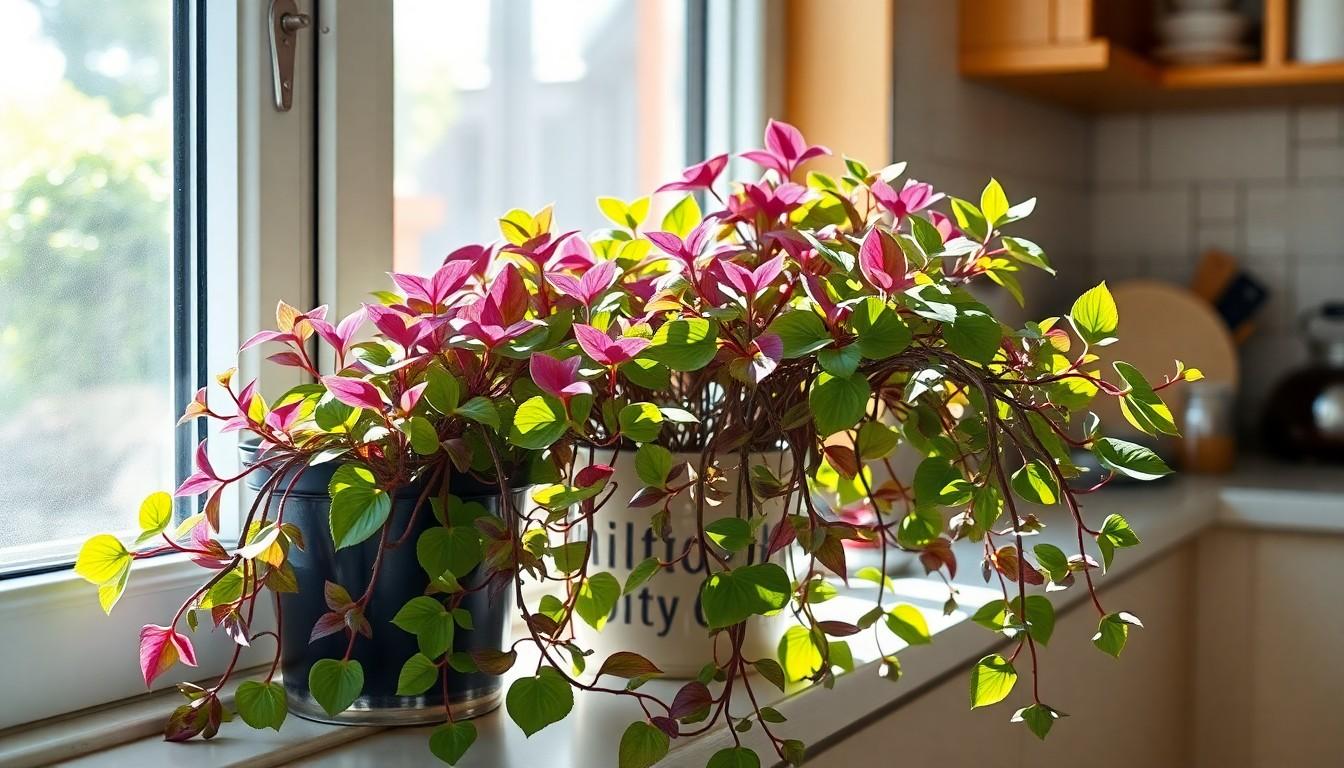The wandering jew plant is the perfect mix of charm and mischief, making it a beloved choice for plant enthusiasts. With its vibrant leaves and trailing vines, it’s like the cool friend who always shows up to the party. But caring for this little green troublemaker isn’t just about admiring its beauty; it’s about giving it the love and attention it craves.
Understanding the Wandering Jew Plant
The wandering jew plant features vibrant leaves and trailing stems, making it a beloved choice for indoor gardens. Recognizing its unique characteristics enhances the care strategy for this exquisite plant.
Common Varieties
Various types of wandering jew plants exist, including Tradescantia zebrina, Tradescantia pallida, and Tradescantia fluminensis. Tradescantia zebrina showcases striking silver and purple stripes, appealing to many. Meanwhile, Tradescantia pallida displays deep purple foliage, adding a bold touch to any space. Tradescantia fluminensis offers a more green and variegated option, appealing to those who favor lighter colors. Each variety presents unique attributes that cater to diverse aesthetic preferences.
Ideal Growing Conditions
Wandering jew plants thrive in bright, indirect sunlight, making a sunny windowsill an excellent spot. Maintaining temperatures between 60°F to 75°F ensures optimal growth. Regular watering helps the soil remain slightly moist, preventing root rot. Providing humidity levels above 50% supports healthy leaf development, especially in drier environments. Fertilizing with a balanced liquid fertilizer every four to six weeks promotes vigorous growth during the growing season. Choosing the right conditions enables successful cultivation of this vibrant plant.
Watering Requirements

Wandering jew plants thrive with consistent moisture but dislike soggy conditions. Understanding their watering needs is essential to keep them healthy.
Frequency and Amount
Watering frequencies depend on several factors, including light conditions and temperature. During warmer months, watering every 4 to 6 days suffices. Reduced frequency occurs during the winter, where watering every 1 to 2 weeks works. Each time, provide sufficient water until it drains from the bottom of the pot. This practice ensures that the soil remains adequately moist without waterlogging.
Signs of Overwatering
Recognizing signs of overwatering prevents severe damage to wandering jew plants. Leaf yellowing commonly indicates excess moisture around roots. Wilting can occur despite the soil being wet; this suggests roots struggle to absorb oxygen. Mushy stems also signal trouble, as they exhibit rot due to overly saturated conditions. Adjusting the watering schedule and checking drainage can remediate these issues, maintaining a healthy plant.
Light and Temperature Needs
Wandering jew plants require specific light and temperature conditions to thrive.
Best Locations in Your Home
Bright, indirect sunlight works best for wandering jew plants. Placing them near east or west-facing windows ensures adequate light exposure. Avoid direct sunlight, as it can scorch the leaves. A spot away from cold drafts and heat sources, such as radiators, provides a stable environment. For optimal growth, consider using grow lights in lower light areas.
Temperature Preferences
These plants prefer temperatures between 60°F and 75°F. Sudden temperature changes can stress the plant, leading to leaf drop. Maintaining a consistent warmth contributes to healthy growth. During winter months, keep the plant away from chilly windows to prevent cold damage. Additionally, they appreciate higher humidity levels, often found in kitchens and bathrooms, which can support their overall vitality.
Soil and Fertilization
Proper soil and fertilization are crucial for the wandering jew plant’s health and vibrant growth. Choosing the right soil mix and establishing a fertilization schedule helps maintain its aesthetic appeal.
Choosing the Right Soil
Quality potting mix enhances drainage and aeration. A blend containing peat moss, perlite, and compost works well, as it retains moisture without becoming soggy. Specific formulations designed for houseplants also suit wandering jew plants. Soil pH levels ranging from 5.5 to 7.0 promote optimum growth. Regular checks prevent compaction, ensuring roots receive adequate air and nutrients.
Fertilization Schedule
Creating a fertilization schedule significantly supports the plant’s growth during the active growing season. Applying a balanced liquid fertilizer every four to six weeks supplies essential nutrients. Diluting the fertilizer to half the recommended strength avoids potential root burn. During the winter months, reduce fertilization frequency to once every two months as the plant’s growth slows. Monitoring the plant’s response helps adjust the feeding routine if needed, ensuring a healthy and vibrant wandering jew plant.
Pruning and Propagation
Caring for a wandering jew plant includes proper pruning and propagation techniques. Both methods enhance growth and maintain a healthy appearance.
Techniques for Pruning
Pruning promotes bushier growth in wandering jew plants. Use clean, sharp scissors or pruning shears to remove long stems. Shortening these stems encourages branching and creates a denser canopy. Focus on cutting above a leaf node to stimulate new growth. Regularly pruning every few months helps control size and shape, preventing leggy appearances. Discard any dead or yellowing leaves to improve overall plant health.
Methods of Propagation
Propagation offers a simple way to expand your collection of wandering jew plants. Stem cuttings work best for this plant. Select healthy stems, cutting them just below a node. Place the cuttings in water or soil, ensuring they maintain moisture. If using water, roots may develop within a week. If choosing soil, keeping it lightly moist will support root establishment. This method can lead to new plants within a few weeks, providing plenty of opportunities for sharing or replanting.
Conclusion
Caring for a wandering jew plant can be a rewarding experience. With its stunning foliage and trailing vines it adds beauty to any space. By providing the right light temperature and humidity levels along with consistent watering and proper soil, anyone can enjoy a thriving plant.
Regular pruning not only enhances its appearance but also encourages healthier growth. Propagation offers an exciting way to expand a collection or share with friends. With a little attention and care the wandering jew plant can flourish and bring joy for years to come.
